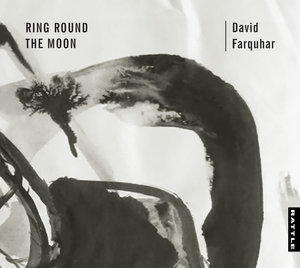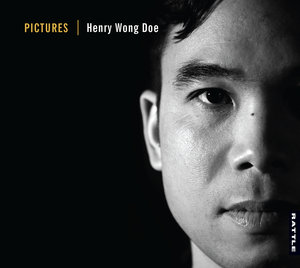Behn Quartet
Kate Oswin (Christchurch-born, violin), Alicia Berendse (violin, Netherlands), Lydia Abell (viola, Wales), Ghislaine McMullin (cello, England)
(Wellington Chamber Music)
Debussy: String Quartet in G Minor
Jack Body: Three Transcriptions
Shostakovich: String Quartet No. 3 in F major, op. 73
St Andrew’s on The Terrace
Sunday 22 April, 3 pm
Wellington Chamber Music Inc opened its 2018 season of seven concerts with a multi-national string quartet (naturally, one cannot use the word -ethnic when speaking of members of several nations inhabited by one ethnic group, European peoples), led by a New Zealander.
It’s probably unusual for a musical group to adopt a literary name. Aphra Behn was a late 17th century English woman playwright and novelist. She’s always interested me: go to the end of this review to read a bit more about her.
Debussy String Quartet
An excellent programme began with Debussy’s only string quartet. It caught my attention at once with the gorgeous warmth and homogeneity of sounds produced by the four women, and it prompted some inadmissible thoughts that might be sexually discriminatory towards male string players. It struck me that, unlike some male players, here there was absolutely no sense that any player was in the least concerned about being distinguished individually.
I have never felt that Debussy’s writing for quartet led particularly to sounds that were so closely knit, not just in their ensemble, but more strikingly in their unified tone. Furthermore I was enraptured by their subtly elastic rhythms and pacing, and that was even more evident in the second movement, Assez vif et bien rythmé. Where they could play up the hesitancy that seems inherent in the music, and to permit the varied musical personalities of the players to be heard. Here for the first, but not the last time, the viola of Lydia Abell which opens so vividly over pizzicato from the others, made the kind of sound that really justifies the distinct role of the viola in a string quartet. But her sound was never at the expense of the ensemble which remained so happily at one.
The second violin of Alicia Berentse opens the third movement (Andantino, doucement), but the viola soon takes up its plaintive song and I began to wonder whether I was becoming rather unhealthily obsessed with it; but I realised that it was actually the violist alone whom I could see properly, and so tended focus unduly on her playing, from a position a bit too far back to see the other players (sight lines are a bit of a problem when players remain at floor level). But the cello of Ghislaine McMullin took its turn with the ultra douce melody, with equally rapturous playing, and the viola enjoys a particularly striking episode later in the third movement. The remarkable pause in the middle of the third movement never ceases to surprise me.
However, the cellist too has rewarding episodes, particularly in the last movement where she opened secretively with her winding theme which suddenly springs to life. And while the two violins play distinctive, energetic roles, it was again the interesting contributions by viola and cello that mostly impressed me.
Jack Body’s Three Transcriptions has become a fairly popular piece, and a unique piece it is. Being based on three very different folk pieces for exotic instruments, the translations to string quartet do strike one from time to time as eccentric, somehow eviscerated and without the authentic character which would, I’m sure, have been uniquely arresting and enlivening. But they are what they are, and these performances, different of course from what I’ve heard from the New Zealand String Quartet, stood their ground. They captured the essence of the Chinese Long-ge, jew’s harp as well as simulating the jagged rhythms of the Ramandriana from Madagascar. But they couldn’t really replicate the excitement of a great deal of Balkan musical traditions (I’m much more familiar with Greek and Serbian folk/popular music). Yet they were fired with the music’s energy and handled capably the exotic playing techniques that Body demanded, with an occasional shout simulating the ecstatic response of the dancers.
Shostakovich’s Third String Quartet, written at the end of the war, in 1945, begins in a surprisingly cheerful way, making no reference to the horrors just ended, but soon an unease arises over what Stalin now had in store for his people now that the Communist Party could get back to its main purposes. It’s in five movements, though the programme note could have been misleading, showing the fourth movement as Adagio – Moderato; Moderato in fact describes the fifth movement.
The second movement calls up a somewhat funereal quality with a slow, rising, minor triad on the viola; the notes call it a sardonic waltz; how would Andrei Zhdanov (who led the 1947 attacks on ‘formalist’ music that devastated Shostakovich, Prokofiev and Khachaturian) have interpreted this uneasy music? For there is little scope to misinterpret the heavy opening strokes by all four players in the third movement, and they employed just the right weight to the compelling rhythms that shift, rather imperceptibly from a 2/4 to ¾ beat. The ending, abrupt like the suddenness of an execution, and shocking in its calm acceptance, brings art and politics into immediate and inseparable proximity.
A similar air dominates the fourth movement, with meandering, uneasy motifs, the most telling parts with viola and cello, though the atmosphere lightens when violins do join, and there’s no mistaking the very temporary lifting of the pervasive tone of apprehension here with the slow disappearance of hope as violas and cellos are alone over the last minute or so. And though the last movement is a little quicker, in what sounds like triplets in duple time (actually 6/8 rhythm), the fifth movement does little more in terms of painting a picture of political life in Soviet past-war period, than suggest a low profile and the best one can do to maintain a happy face.
Being a deeply political person I find this, and much of Shostakovich, engrossing and disturbing, particularly as it is once again becoming relevant in the second decade of the 21st century. The Behn Quartet, whose name suggests acknowledgement of a comparable affinity between the temper of the political world and that of the arts, also played as if they thoroughly understood what Shostakovich was saying in this powerful and eloquent work.
About Aphra Behn
I confess I didn’t have to Google the name ‘Behn’ as I was familiar with it both through my father’s knowledge (he was chief librarian of the Turnbull Library for nearly 30 years, and his discourses at home shaped me. Milton and 17th century literature (and music) are among the library’s international strengths) and my own English literature studies at university. I knew her place in Restoration England (the reigns of Charles II and James II, and later), in theatre and writing in general. Though details of her life, including the way she rose from very modest origins to literary distinction are a bit sketchy, she was successful in both fiction and drama; and she was a rare, feisty, liberated woman writer who at one point had acted as a kind of double agent for the English Crown in the Netherlands.
She was noted as a writer of some fairly bawdy tales, dealing frankly with Lesbians, and being remarked at the time as writing in a vein that was more likely from a male than a female pen (the Restoration was a famously licentious period in literature and the arts).
She lived from 1640 to 1689, and her musical contemporaries were Purcell and John Blow; and on the Continent, Lully and Corelli.
Her other contemporaries were Dryden, Newton, Boyle, Pepys, Bunyan, Nahum Tate (famous as the librettist of Purcell’s Dido and Aeneas), Christopher Wren, and Milton was in his last years; philosophers: John Lock, Spinoza and Leibnitz.
I heard the distinguished 17th century scholar speak at the recent Festival: A C Grayling, an inspiring, strong minded figure with admirably sane political and religious views. Read his The Age of Genius: The Seventeenth Century and the Birth of the Modern Mind.

